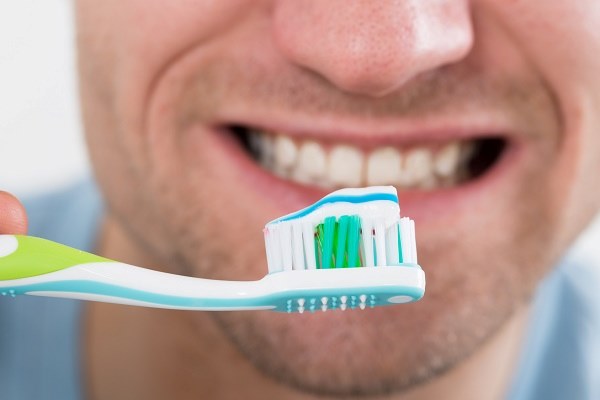From Scrubbing to Savvy: The Art and Science of Brushing Your Teeth Right

- Mastering the Art of Brushing: A Comprehensive Guide to Tooth Brushing Techniques
Maintaining good oral health isn’t just about aesthetics; it’s crucial for overall well-being. Brushing your teeth is a fundamental aspect of oral hygiene, but mastering the technique is essential to ensure optimal results. This guide delves deep into the world of tooth brushing, exploring various techniques, offering expert advice, and debunking common myths.
The Importance of Proper Brushing Technique
Brushing your teeth removes plaque, a sticky film containing bacteria that feeds on food debris, produces acids, and erode tooth enamel. Plaque buildup can lead to numerous oral health problems, including:
Tooth decay: Acids in plaque dissolve tooth enamel, creating cavities.
Gum disease: Plaque irritates gums, causing inflammation, bleeding, and eventually, gum recession.
Bad breath: Plaque harbors bacteria that produce volatile sulfur compounds, resulting in bad breath.
Therefore, using proper brushing techniques is crucial to remove plaque effectively and maintain healthy teeth and gums.
Brushing Techniques for Adults
Basic Technique:
Choose the right toothbrush: Opt for a soft-bristled toothbrush with a comfortable handle. The American Dental Association (ADA) recommends replacing your toothbrush every 3-4 months or sooner if the bristles fray.
Use fluoride toothpaste: Fluoride strengthens tooth enamel and helps prevent cavities. Choose a toothpaste with the ADA Seal of Acceptance for guaranteed safety and effectiveness.
Angle the brush: Hold the brush at a 45-degree angle to the gum line. This allows the bristles to reach both the tooth surface and the gum line where plaque accumulates.
Use short, gentle strokes: Move the brush back and forth in short, tooth-wide strokes. Avoid harsh scrubbing, which can damage gums.
Brush all surfaces of each tooth: Pay special attention to the chewing surfaces, the back of the front teeth, and the gum line.
Brush for two minutes: Aim to brush for at least two minutes twice daily, focusing on all areas of your mouth.
Don’t forget your tongue: Brush your tongue gently to remove bacteria and freshen your breath.
Additional Techniques:
Bass technique: This technique focuses on vibrating the bristles at the gum line to disrupt plaque and stimulate blood flow.
Modified Bass technique: This is a modified version of the Bass technique, especially beneficial for individuals with sensitive gums.
Chartered Institute of Dental Hygiene (CIDH) technique: This technique emphasizes circular strokes combined with gentle up-and-down motions.
Expert Advice:
Dr. Edmond Hewlett, DDS, PhD, professor of periodontology at the University of California, Los Angeles: “Brushing technique is often overlooked, yet it is crucial for optimal oral health. The Bass technique and its modifications are highly effective in removing plaque and preventing gum disease.”
Dr. Maria Lopez, DMD, spokesperson for the American Dental Hygienists’ Association: “Many people brush too hard, which can damage gums and tooth enamel. Use a gentle touch and focus on thorough cleaning, not vigorous scrubbing.”
Research Findings:
A study published in the Journal of Dental Research found that the Bass technique was significantly more effective in reducing plaque than the horizontal scrub technique.
Another study published in the Journal of Clinical Periodontology found that individuals who used the Modified Bass technique had significantly less gum inflammation than those who used a standard brushing technique.
Brushing Techniques for Children
Brushing techniques for children need to be adapted to their age and dexterity.
Children under 3:
- Use a small, soft-bristled toothbrush with a tiny amount of fluoride toothpaste.
- Parents or caregivers should assist with brushing until the child can handle it independently.
- Focus on brushing the front teeth and gums.
Children aged 3-6:
- Allow children to brush their own teeth with supervision.
- Use a pea-sized amount of fluoride toothpaste.
- Help guide the child’s hand to ensure they reach all areas of the mouth.
- Encourage the child to spit out the toothpaste, not swallow it.
Children aged 7 and older:
- Children can typically brush their teeth independently with minimal supervision.
- Encourage them to use the proper brushing technique, including the Bass technique or a modified version.
- Continue to monitor their brushing habits and offer guidance as needed.
Common Brushing Myths Debunked
- Myth: Brushing harder removes more plaque.
- Fact: Harsh scrubbing can damage gums and tooth enamel. Use gentle strokes with the appropriate technique for optimal plaque removal.
- Myth: Brushing after every meal is essential.
- Fact: While brushing after meals is beneficial, it’s not
Electric vs. Manual Toothbrushes:
While both electric and manual toothbrushes can be effective in removing plaque, electric toothbrushes may offer certain advantages. Research suggests that electric toothbrushes, particularly those with oscillating-rotating heads, can remove more plaque and reduce gingivitis compared to manual toothbrushes. However, the effectiveness of both types depends on proper brushing technique.
Tongue Cleaning:
Brushing the tongue is often overlooked, but it’s an essential part of oral hygiene. Bacteria can accumulate on the tongue, contributing to bad breath and other oral health problems. Gently brush your tongue with your toothbrush or a tongue scraper after brushing your teeth.
Flossing and Other Interdental Care:
Brushing alone cannot reach all the areas between your teeth. Flossing once daily removes plaque and food particles from these areas that a toothbrush cannot reach. Additionally, consider using interdental brushes, especially if you have gaps between your teeth.
Timing of Brushing:
While it’s generally recommended to brush twice daily, the timing can be adjusted based on your individual needs. Brushing before bed removes plaque buildup throughout the day and minimizes the overnight growth of bacteria. Brushing in the morning further cleanses the mouth and removes any lingering debris.
Brushing after eating:
While brushing immediately after every meal is not necessary, it can be helpful for individuals prone to cavities or gum disease. However, waiting 30 minutes to an hour after eating, especially acidic foods, allows the saliva to neutralize the acids and protect tooth enamel from erosion.
Special Considerations:
Individuals with braces or other dental appliances: Use a toothbrush with a small head and soft bristles specifically designed for braces. Ask your dentist or orthodontist for specific cleaning instructions.
People with sensitive teeth: Use a soft-bristled toothbrush and a toothpaste formulated for sensitive teeth. Consult your dentist for additional recommendations.
People with dry mouth: Choose a fluoride toothpaste designed for dry mouth and consult your dentist about oral rinses or other options.
Brushing your teeth is a simple yet crucial act for maintaining good oral health. By understanding the proper techniques, using the right tools, and adopting healthy habits, you can achieve a healthy and radiant smile. Remember, regular dental checkups and cleanings are equally important for optimal oral health.
Additional Resources:
American Dental Association: https://www.ada.org/
National Institute of Dental and Craniofacial Research: https://www.nidcr.nih.gov/




